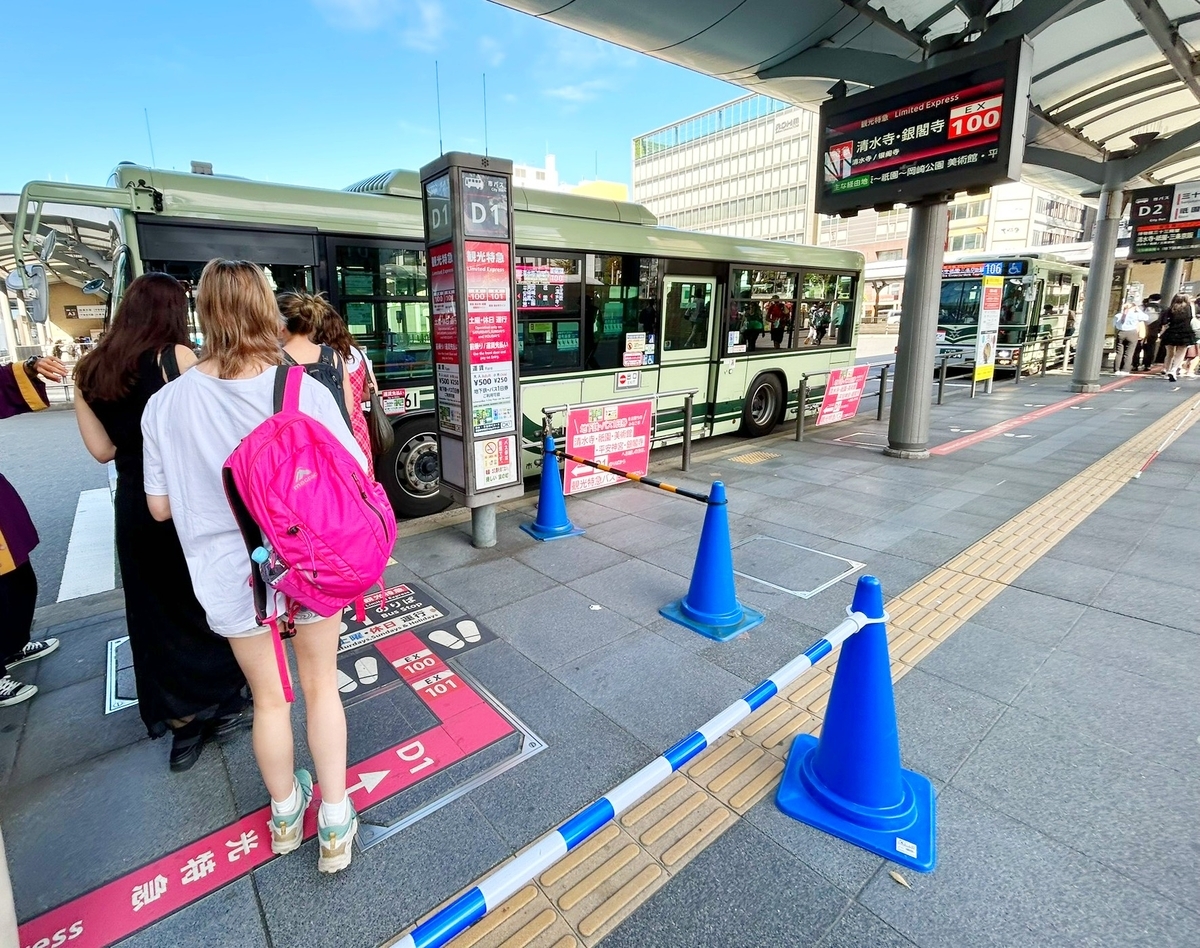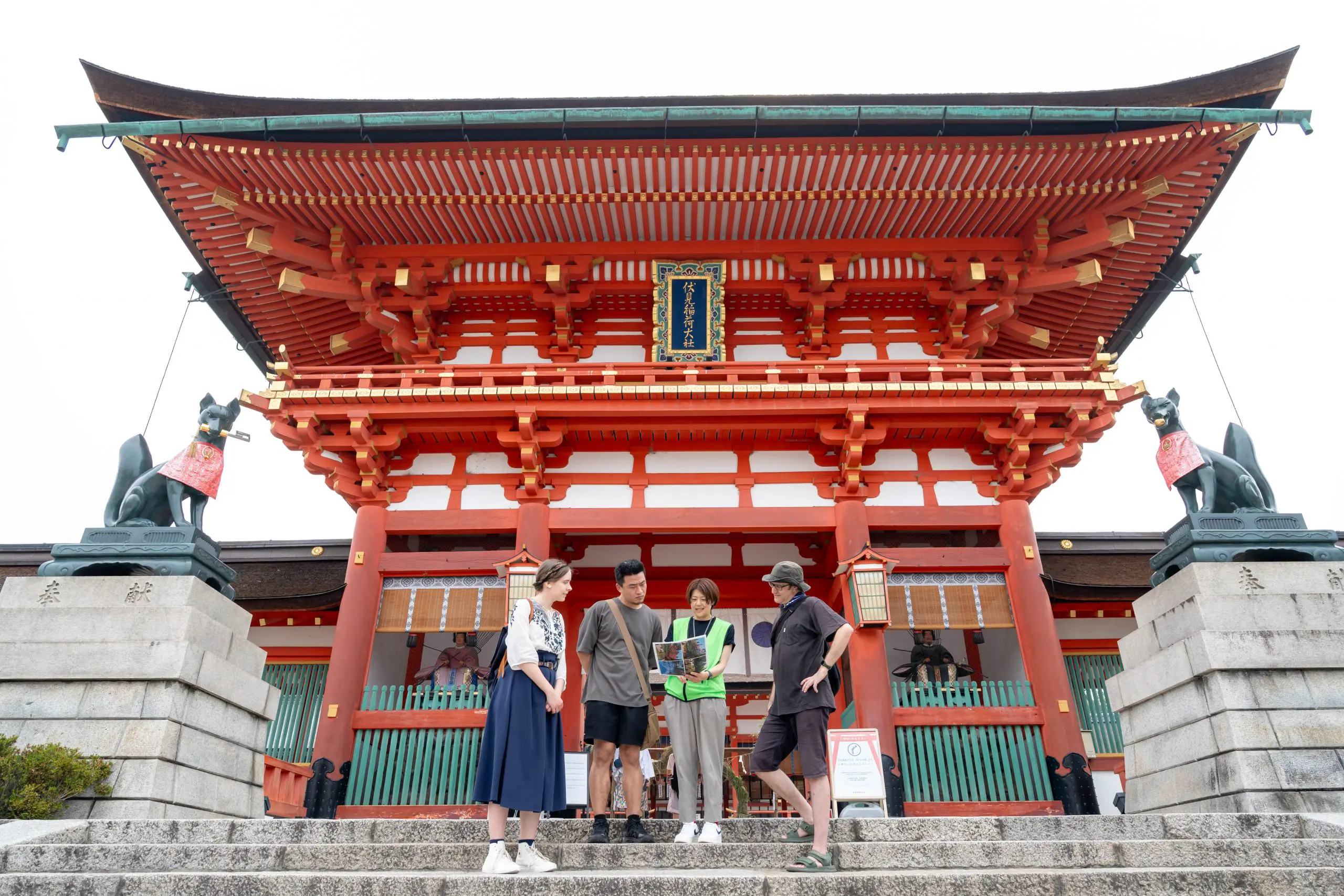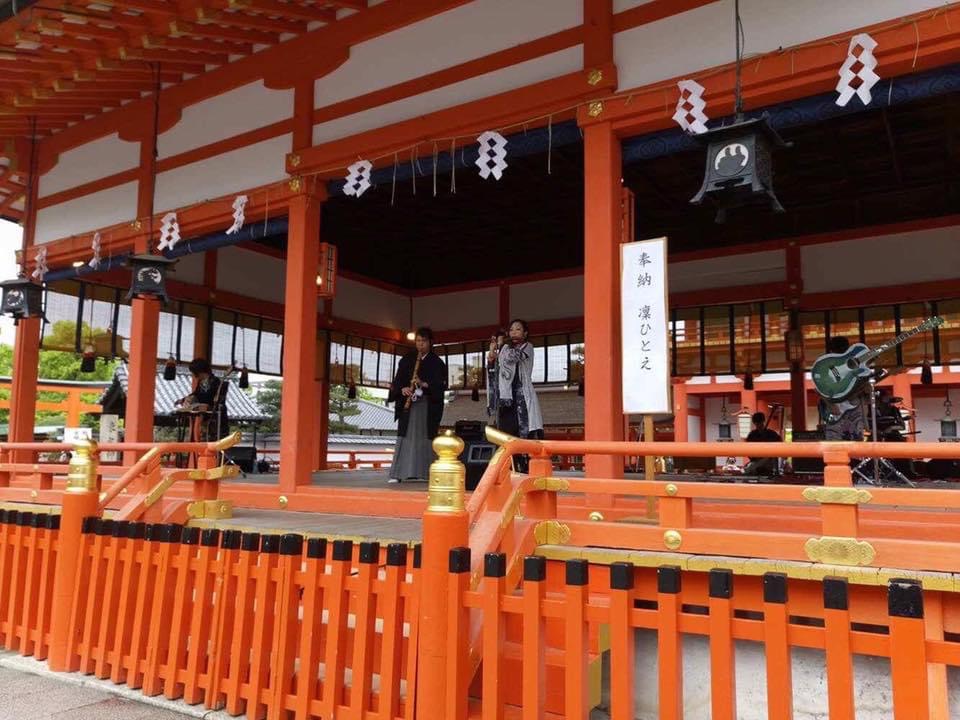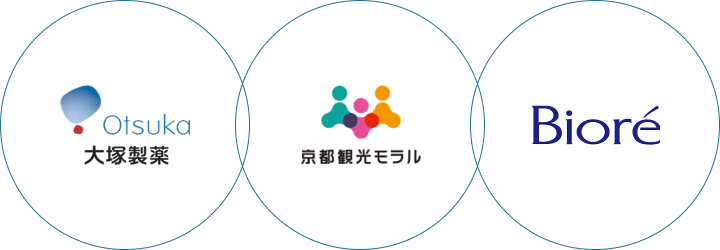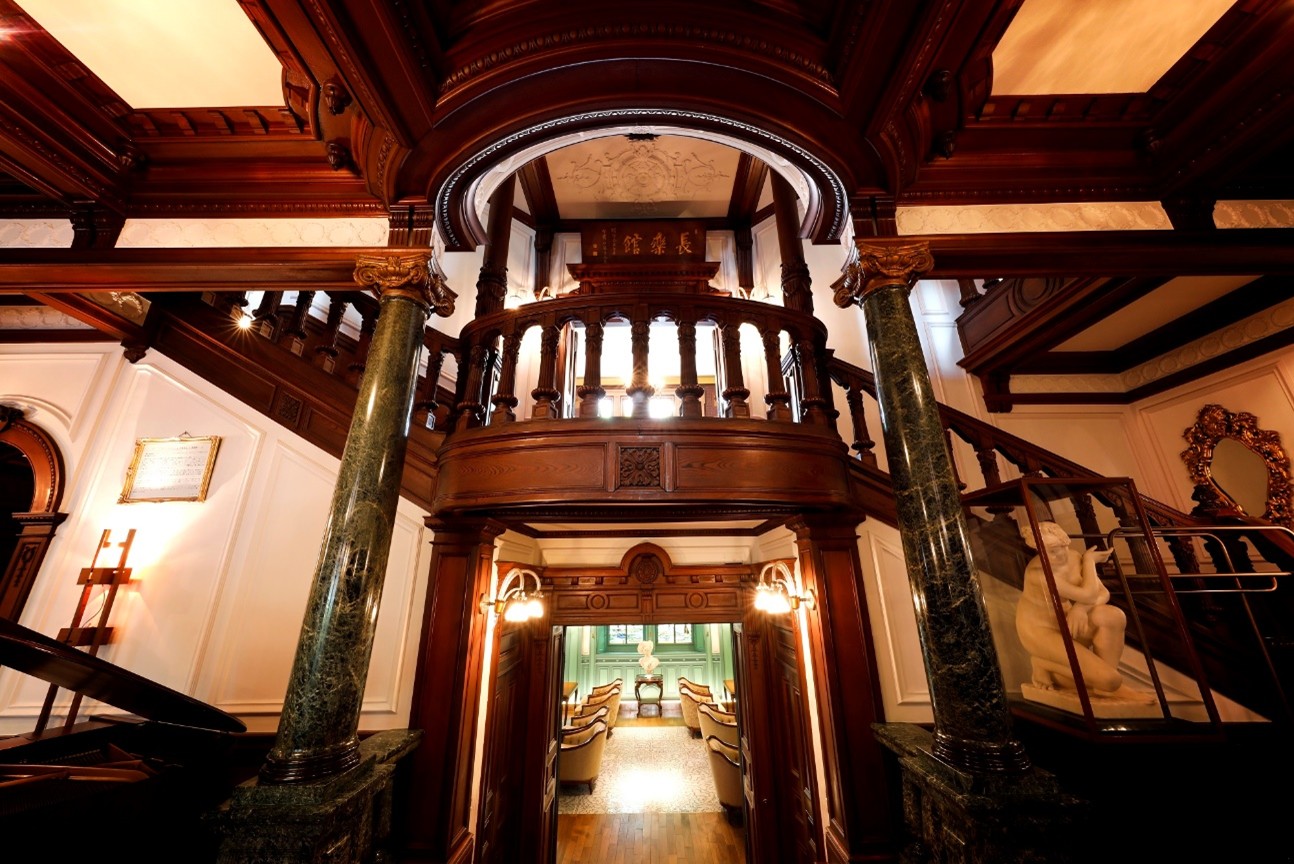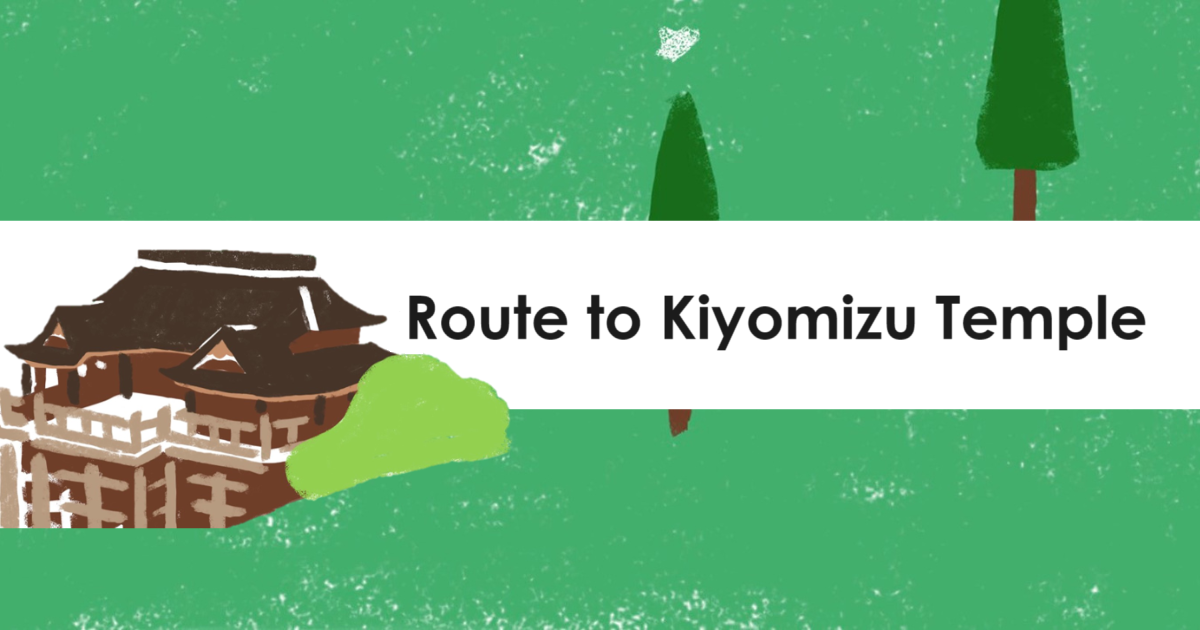
Standard Routes to Kiyomizu Temple
When starting at Kyoto Station, there are two basic routes you can take: (1) Take Kyoto City Bus #86 or #206 and get off at Gojozaka Bus Stop, or (2) Take the JR Nara Line to Tofukuji Station, then transfer to Keihan Railway, get off at Kiyomizu-gojo Station, and walk from there.
Transit Information for Kiyomizu Temple
Access to Kiyomizu Temple (JR Odekake Net)
Kiyomizu Temple (a World Heritage Site) and its surroundings are incredibly popular, so buses there tend to be crowded, which can be a problem. In particular, the #206 bus is used by a lot of people and thus has a lot of departures, but it still tends to get crowded, and buses often get slowed down by traffic and arrive late, or arrive together with the buses that follow them.
To avoid all this hassle, we propose this different route for getting to Kiyomizu Temple. If everyone tries to take the same route there, it will invariably be crowded, but if people are spread out among different routes, it can help reduce congestion in Kyoto.
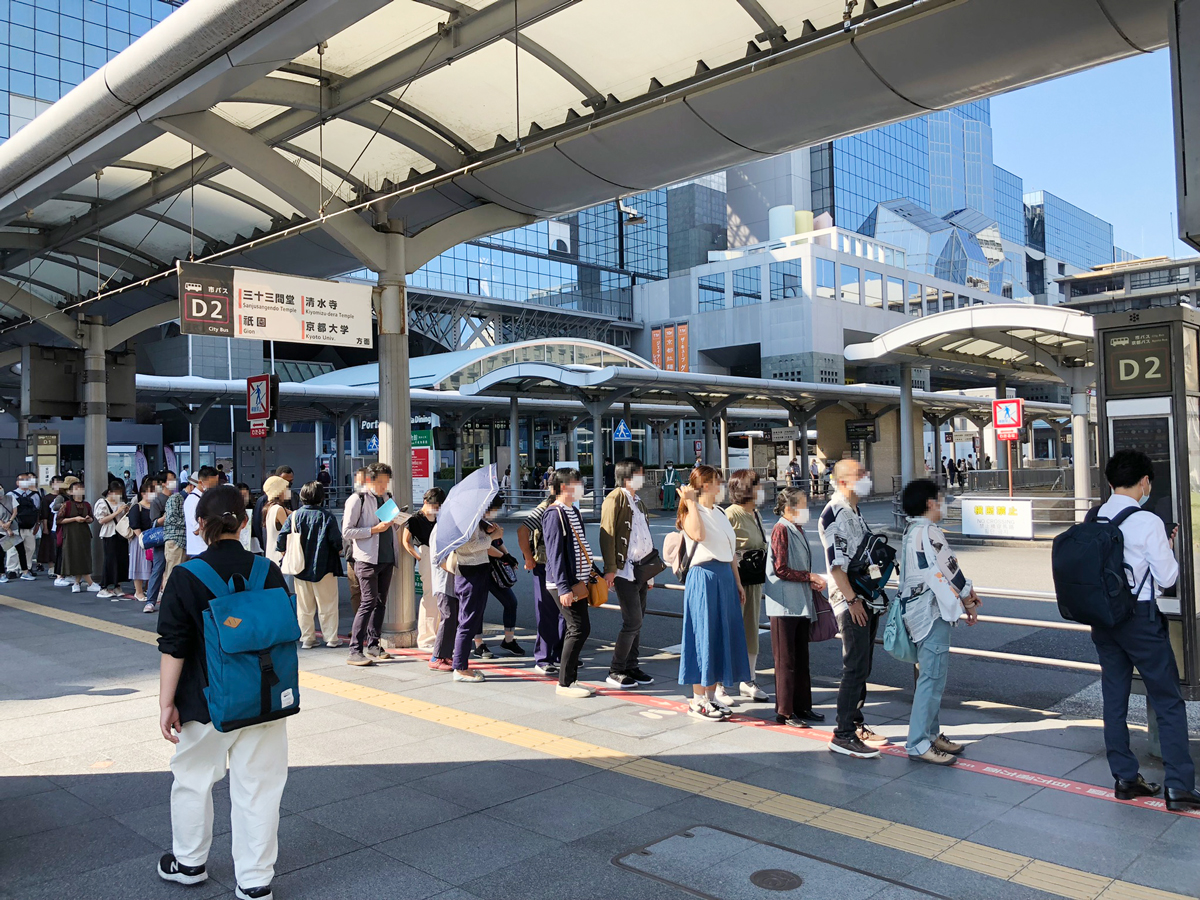
A crowded Kyoto Station (boarding point for buses bound for Kiyomizu Temple)
Alternate Route to Kiyomizu Temple
The alternate route that we propose here features a trick that involves taking the subway from Kyoto Station to Kujo Station, taking a City Bus from Subway Kujo Station (Oishibashi) Bus Stop to Gojozaka Bus Stop, then walking the rest of the way to the temple. This trick also comes in handy when you’re on your way back to Kyoto Station from Kiyomizu Temple. Buses from Kiyomizu Temple to Kyoto Station tend to be especially crowded in the evenings, so you can avoid all that congestion by taking a bus from Gojozaka to Subway Kujo Station (Oishibashi), then either taking the subway from Kujo Station or walking to Kyoto Station.
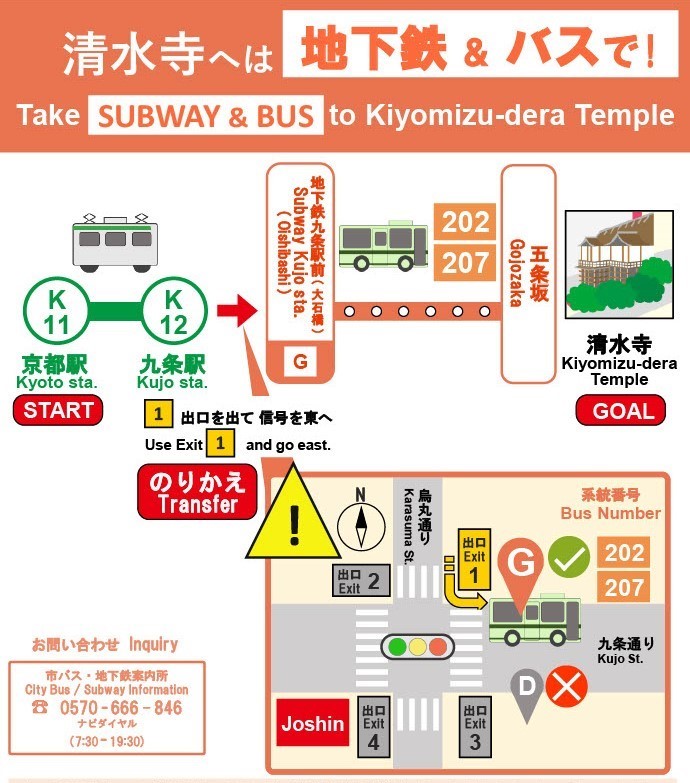
Image by: Kyoto Municipal Transportation Bureau / Kyoto Traffic Bureau Cooperation Society
There are also convenient and economical tickets that give you unlimited rides on the subway and buses for one day!
Subway & Bus 1-Day Pass
Price: Adults 1,100 yen Children 550 yen
Available at: City Bus & subway information counters, commuter pass sales counters, subway stations, Kyoto Tourist Information Center (Kyo-Navi), etc.
Take the subway from Kyoto Station [Kyoto Station → Subway Karasuma Line Kujo Station]
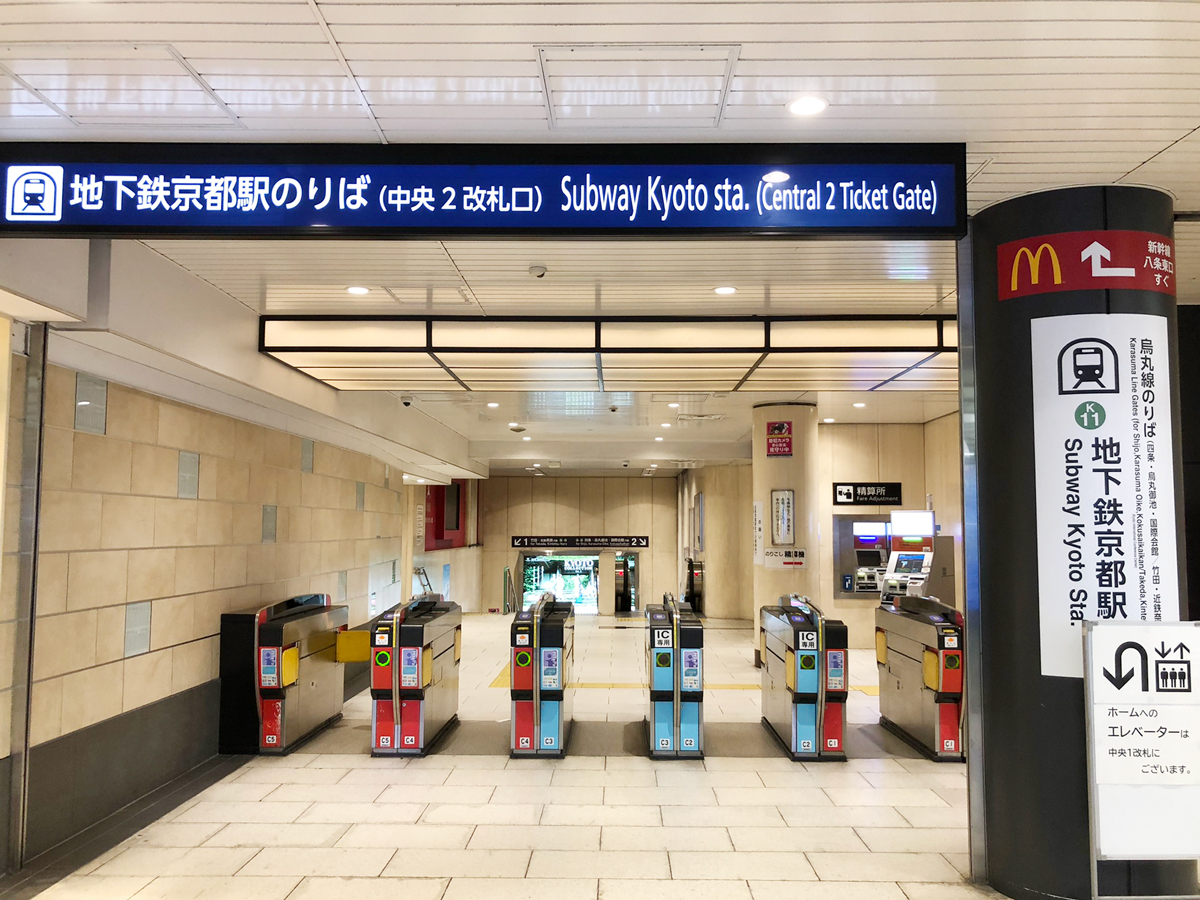
Subway Kyoto Station
There are four ticket gates for getting into Subway Kyoto Station underneath the Kyoto Station building, so enter through the ticket gate nearest to you.
Related article:
From Platform 1, take the subway (Karasuma Line) bound for Takeda, Shintanabe, or Kintetsu Nara, and get off at the first stop, Kujo Station. It’s just one station away, so you can also walk there.
If going by train, it takes about 2 minutes, and the fare for adults is 220 yen. Walking there takes about 10 minutes.
Transfer to the City Bus and head for Gojozaka [Subway Kujo Station (Oishibashi) Bus Stop → Gojozaka Bus Stop]
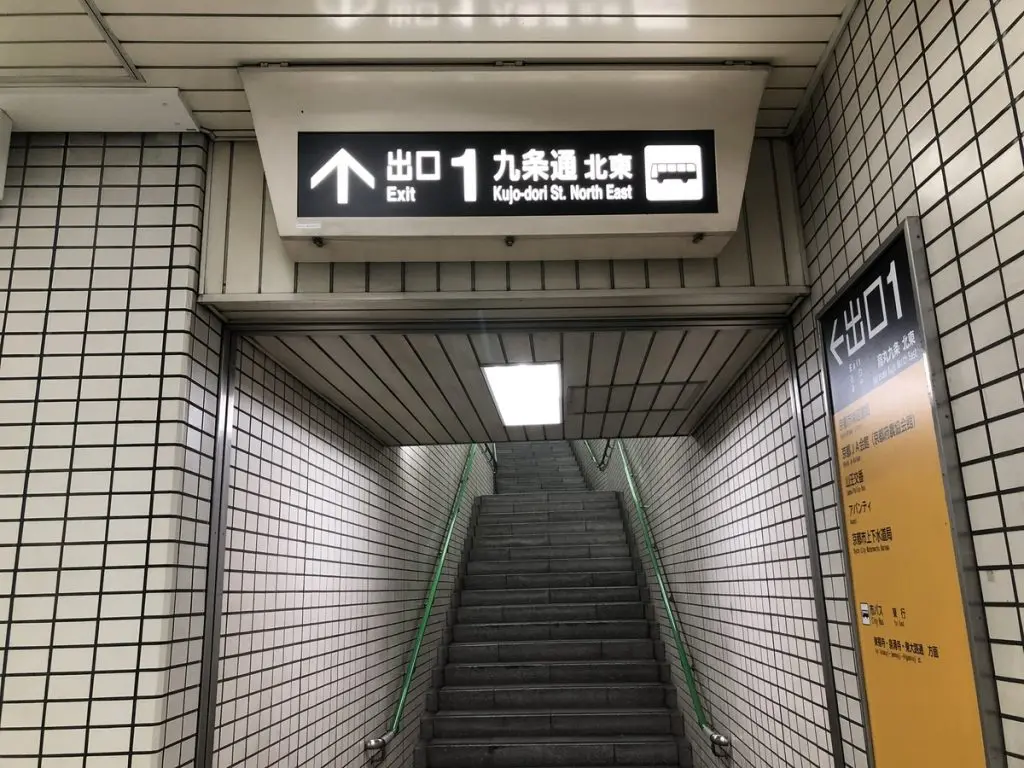
Subway Kujo Station Exit 1
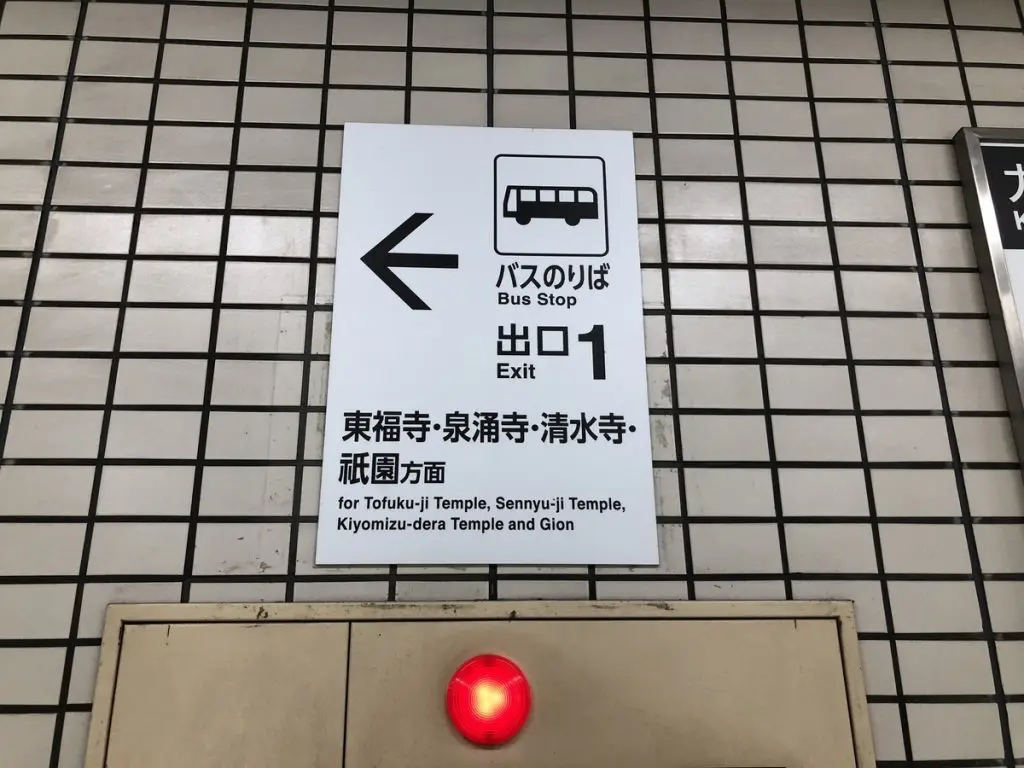
Exit 1 is closest to the bus stop that takes you to Kiyomizu Temple. Go up to street level.

Kujo Station at street level
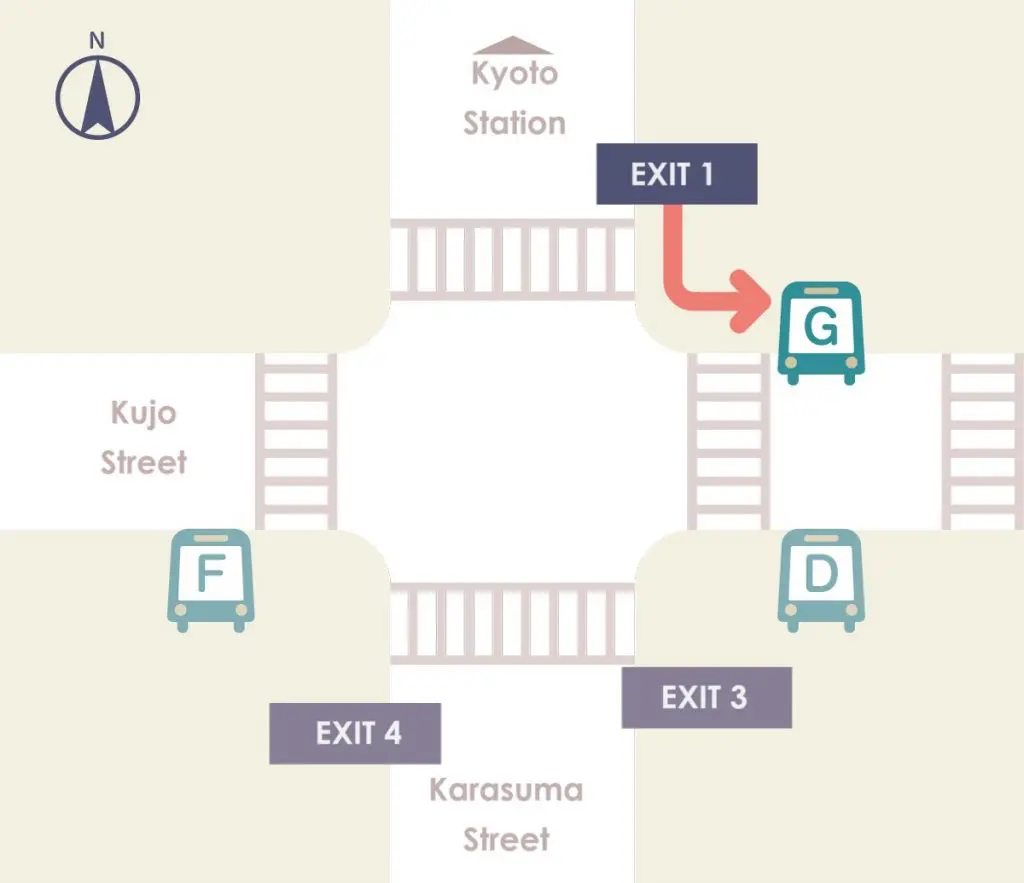
City Bus boarding point map
Go to Subway Kujo Station (Oishibashi) Bus Stop at Boarding Point G. There are a lot of bus stops in this area, so be careful not to use the wrong one. From Exit 1 of Kujo Station, head left, then turn the corner and you will see Boarding Point G.
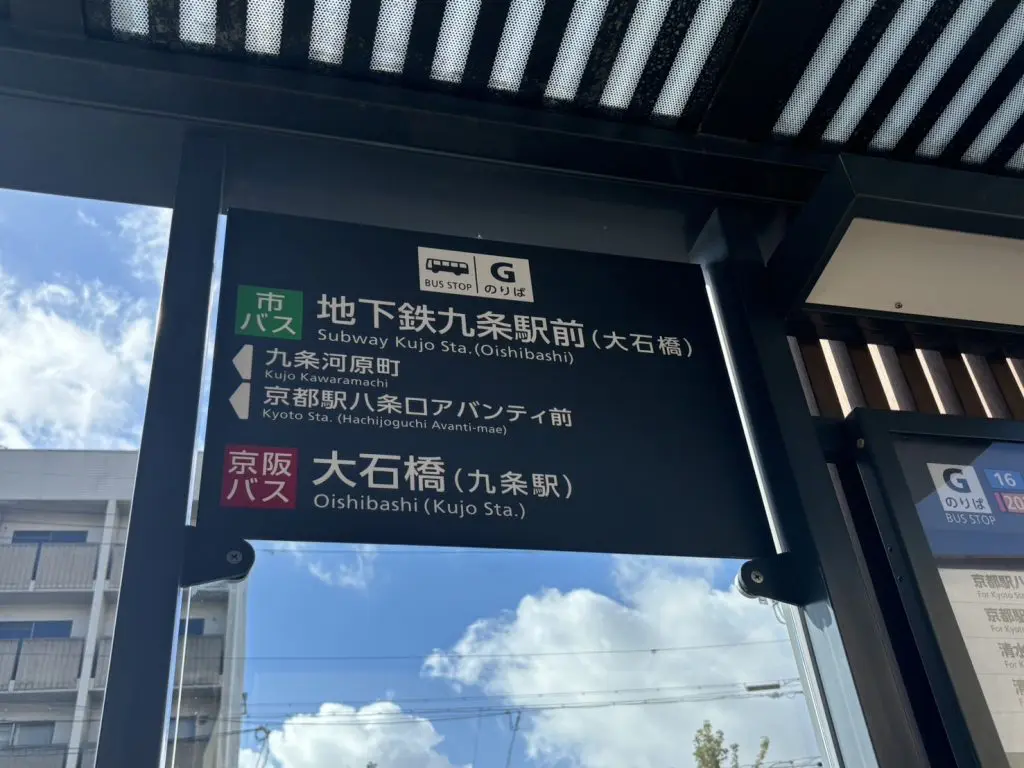
Subway Kujo Station (Oishibashi) Bus Stop (Boarding Point G)
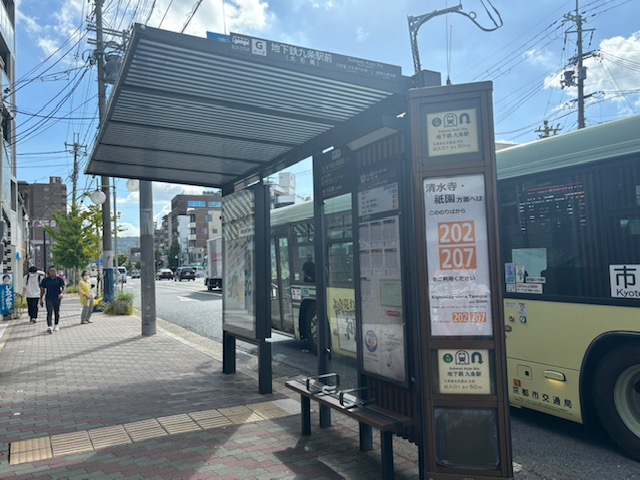
Take the #202, #207, or #58 (operates only on Saturdays and holidays) bus and get off at Gojozaka Bus Stop.
Walk from Gojozaka Bus Stop to Kiyomizu Temple [Gojozaka Bus Stop → walk]
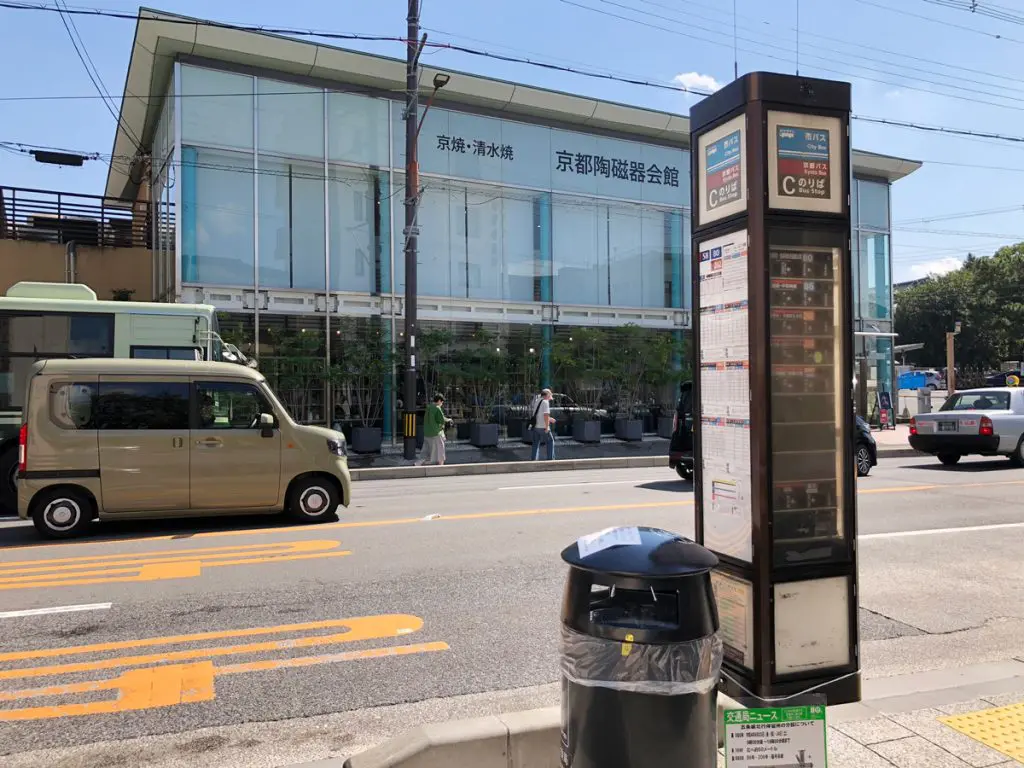
Gojozaka Bus Stop
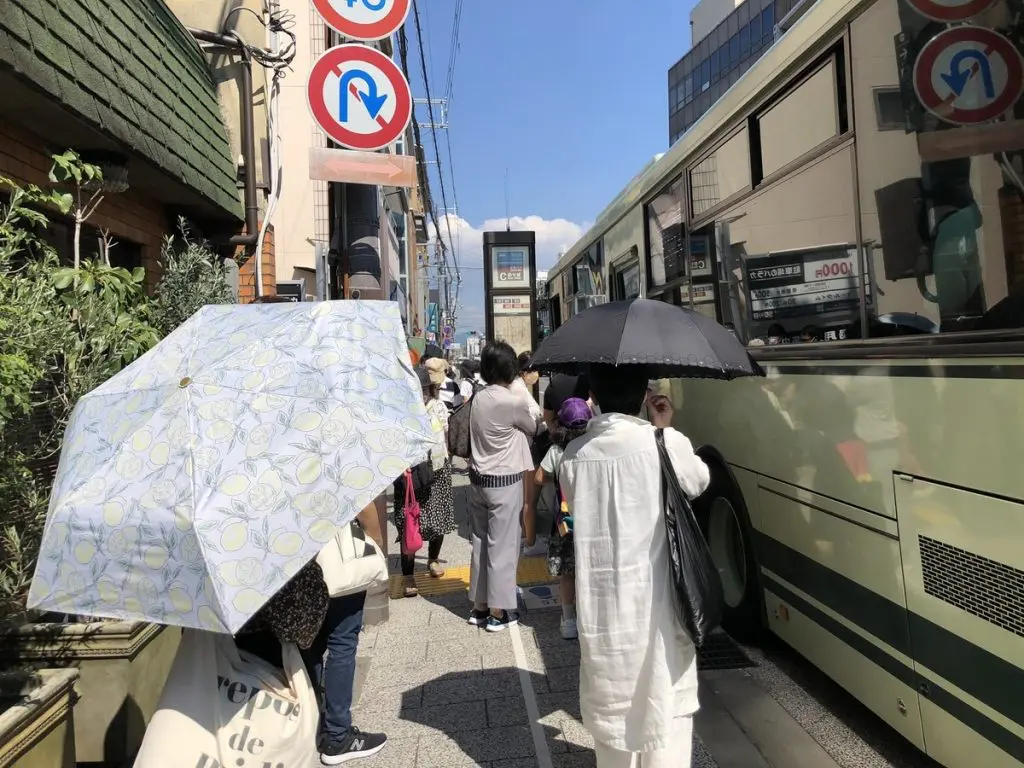
A narrow road
Get off at the Gojozaka Bus Stop on Higashioji-dori. The streets in this area are narrow and often crowded, so be careful when getting on and off the bus here.
◎Helpful Tip
The road (Higashioji-dori) just past Higashiyama Nanajo, two stops before Gojozaka, is prone to traffic jams. If traffic is bad, getting off at Umamachi Bus Stop, one stop before Gojozaka, is a good way to beat the congestion. Doing so allows you to avoid traffic jams that tend to occur at the “Higashiyamagojo” intersection, which has long wait times for traffic signals. It’s about a 5-minute walk from Umamachi to Gojozaka.
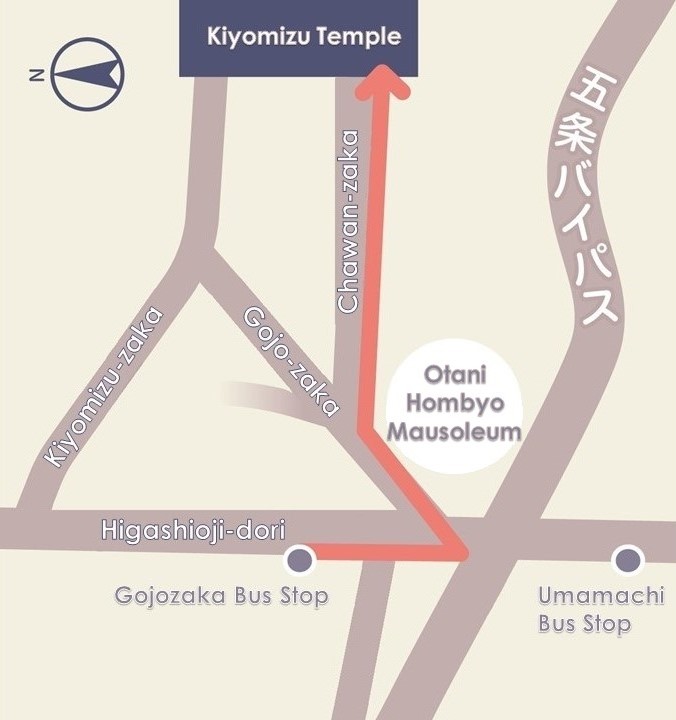
Map from Gojozaka Bus Stop to Kiyomizu Temple

Sign for Kiyomizu Temple
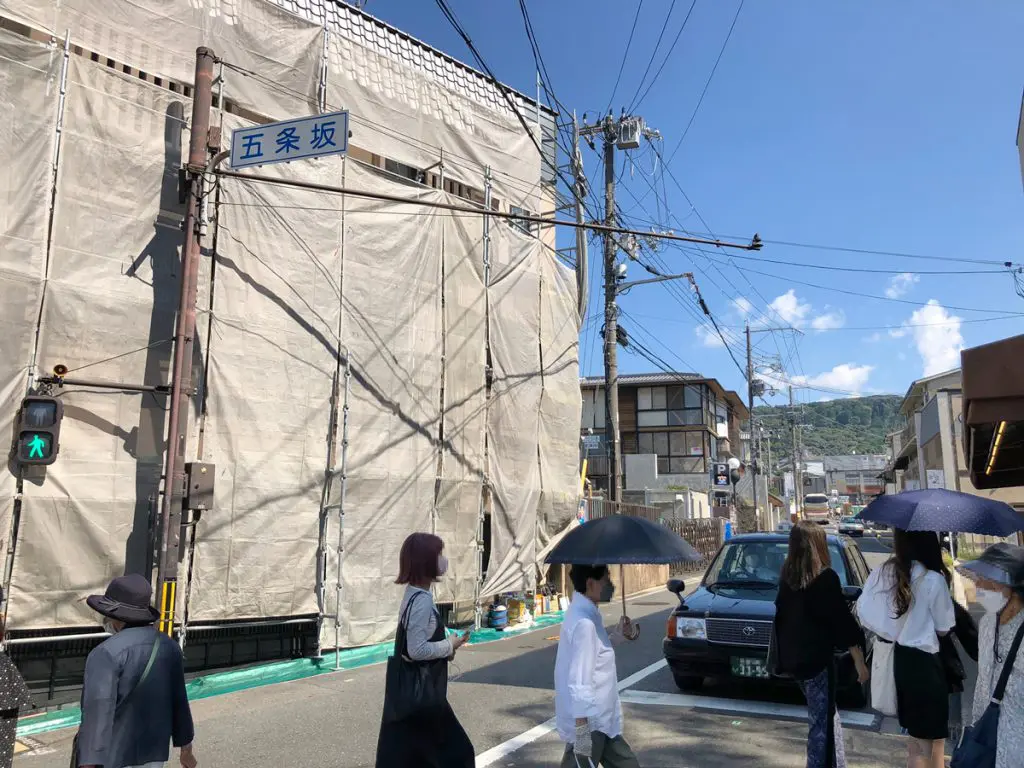
Sign for Gojozaka
After getting off the bus, cross the street at the crosswalk to the side where the Kyoto Ceramic Center is located. Keep an eye out for signs for Kiyomizu Temple along the way. After crossing the crosswalk, there will be a slope with a sign for Gojozaka. Go up that slope. It’s a rather narrow road, so please be careful.

The Road Leading to Kiyomizu Temple (Gojozaka)
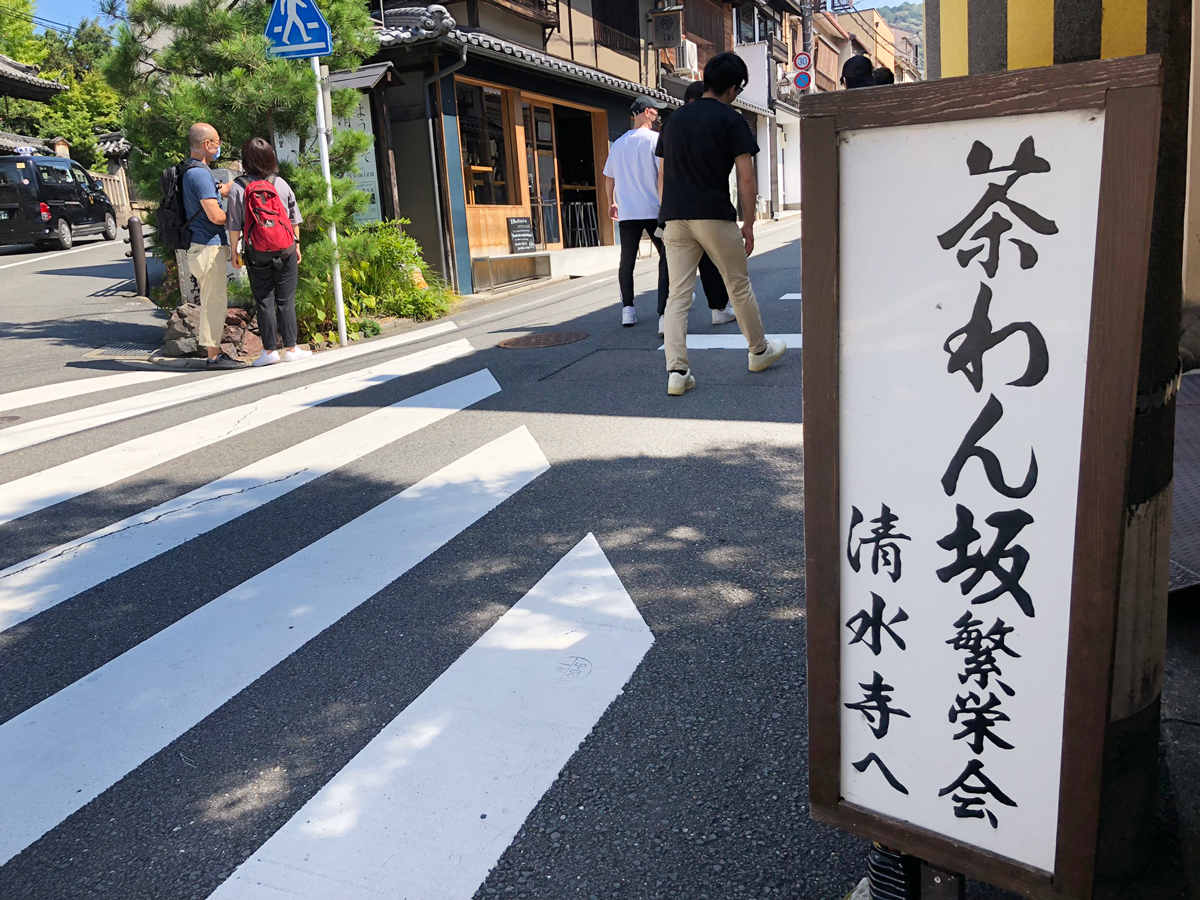
Three-way intersection with Chawanzaka

◎ Helpful Tip
Walking straight down Gojozaka, you will come to a three-way intersection. If you continue straight, you will end up at “Kiyomizu-zaka,” an area lined with many souvenir shops.
This is a very crowded area with many tourists coming from the famous “Sanneizaka” sightseeing spot.
Therefore, we would like to introduce a recommended back road! The road on the right is called “Chawanzaka” and is lined with pottery shops.
If you go straight there, you can go to Kiyomizu-dera Temple without being crowded comparatively, so let’s go there!

Make your way straight up Chawanzaka and you will see a set of steps that lead to the grounds of Kiyomizu Temple. Make your way up the stairs, and the temple’s red Niomon Gate and three-story pagoda will come into view! Enjoy your visit to Kiyomizu Temple!
Getting Back to Kyoto Station
To get back to Kyoto Station, you can take any of the #58 buses or some of the #202 and #207 buses from Gojozaka directly to the Hachijo Gate (station south-side entrance) of Kyoto Station.
Walking from Kiyomizu Temple to Subway Higashiyama Station takes about 30 minutes. There are a number of wonderful sights to see on your way, including Kodaiji Temple, the Gion district, Chion-in Temple, and Shoren-in Temple! Our recommendation is to take a stroll in this area and then take the subway back to Kyoto Station.
Reference Articles:
Easy Access for Sightseeing in the Kiyomizu Temple and Higashiyama Areas: Use Subway Higashiyama Station to Avoid the Crowds
City Bus Stopover Spots
From Subway Kujo Station (Oishibashi) Bus Stop, you can take the #202, #207, or #58 (operates only on Saturdays and holidays) bus on your way to Gojozaka Bus Stop, but there are also a lot of sights to see along the way. Here are a few spots that are easy to drop by on your way to or from Kiyomizu Temple!
1. Tofukuji Temple

Get off at Tofukuji Bus Stop, then walk approx. 15 min.
The head temple of the Tofukuji sect of Rinzai Zen Buddhism. It is a large temple that is home to valuable structures that date back to the Muromachi Period (1336-1573) including a Sanmon Gate, bathhouse, and lavatory. Tsutenkyo Bridge, a location famous for its fall foliage scenery, can be found on the temple grounds. There are also a number of unique pagoda temples here.
2. Sennyuji Temple
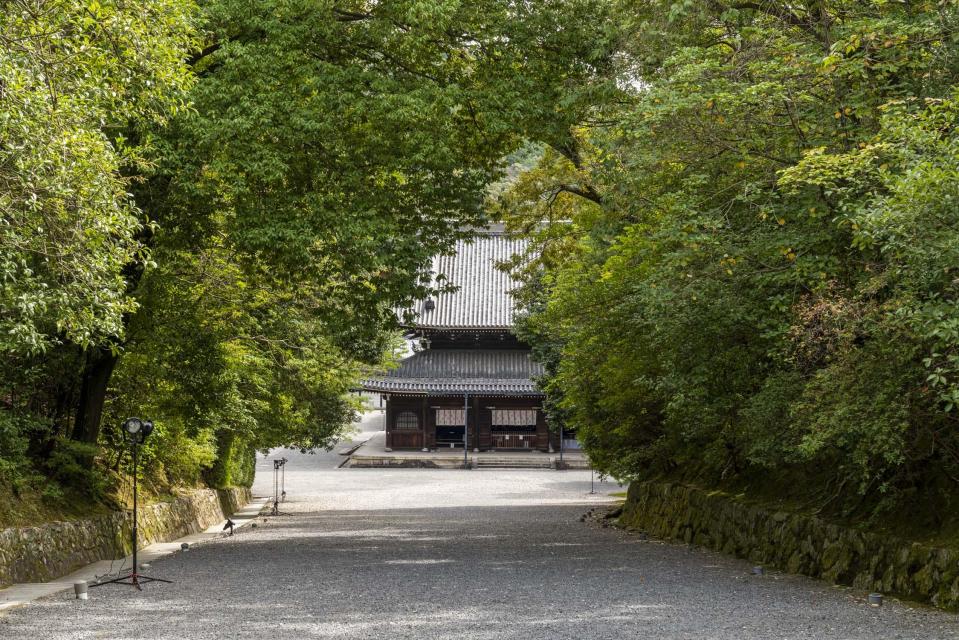
Get off at Sennyuji-michi (Sennyuji Temple) Bus Stop, then walk approx. 15 min.
The head temple of the Sennyuji sect of Shingon Buddhism. This temple has a close connection to the Japanese Imperial Family. It is home to the largest Reclining Buddha painting in Japan, as well as a statue of Yokihi Kannon, famous as a deity for those praying for beauty.
3. Chishakuin Temple
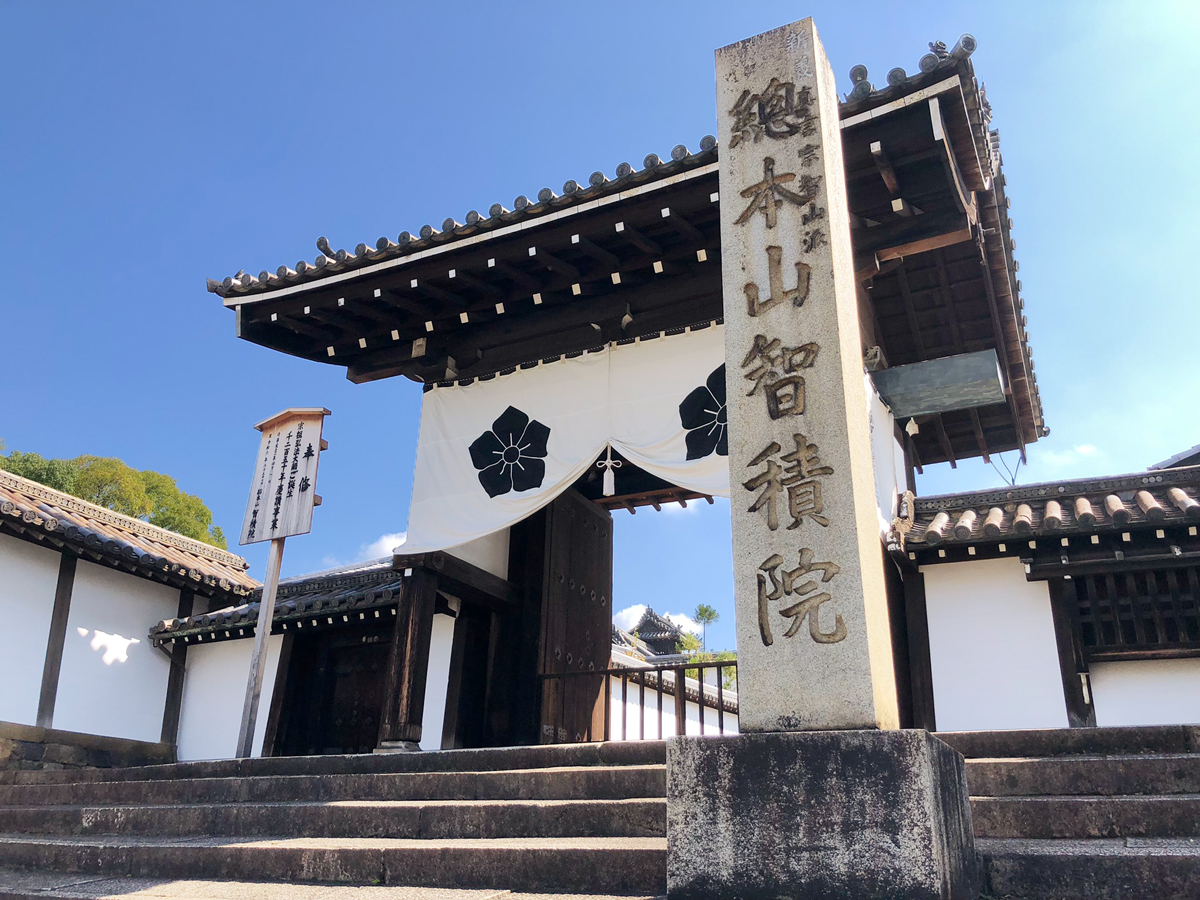
Get off at Higashiyama Nanajo Bus Stop, then take a short walk
The head temple of the Chisan sect of Shingon Buddhism. Famous for its pond garden that is typical of the early Edo Period (1603-1867), it is also home to two Momoyama Period (1568-1600) screen paintings, “Cherry Blossoms” and “Maple”, both of which are national treasures.
4. Sanjusangendo
Get off at Higashiyama Nanajo Bus Stop, then walk approx. 5 min.
Officially named Rengeo-in Temple, this temple is commonly known as Sanjusangendo. Its hall is 22 meters deep and 120 meters long from north to south, making it one of the longest wooden buildings in the world. The hall is an unprecedented space filled with numerous Buddhist statues of immense artistic value, including 1,001 Senju Kannon sculptures, a seated Senju Kannon statue over 3 meters high, and 28 guardian deities. All of these statues and the main hall itself are national treasures. It is also famous for its Omato Archery Competition, which is based on a traditional long-distance archery competition called “Toshiya”.
5. Kyoto National Museum
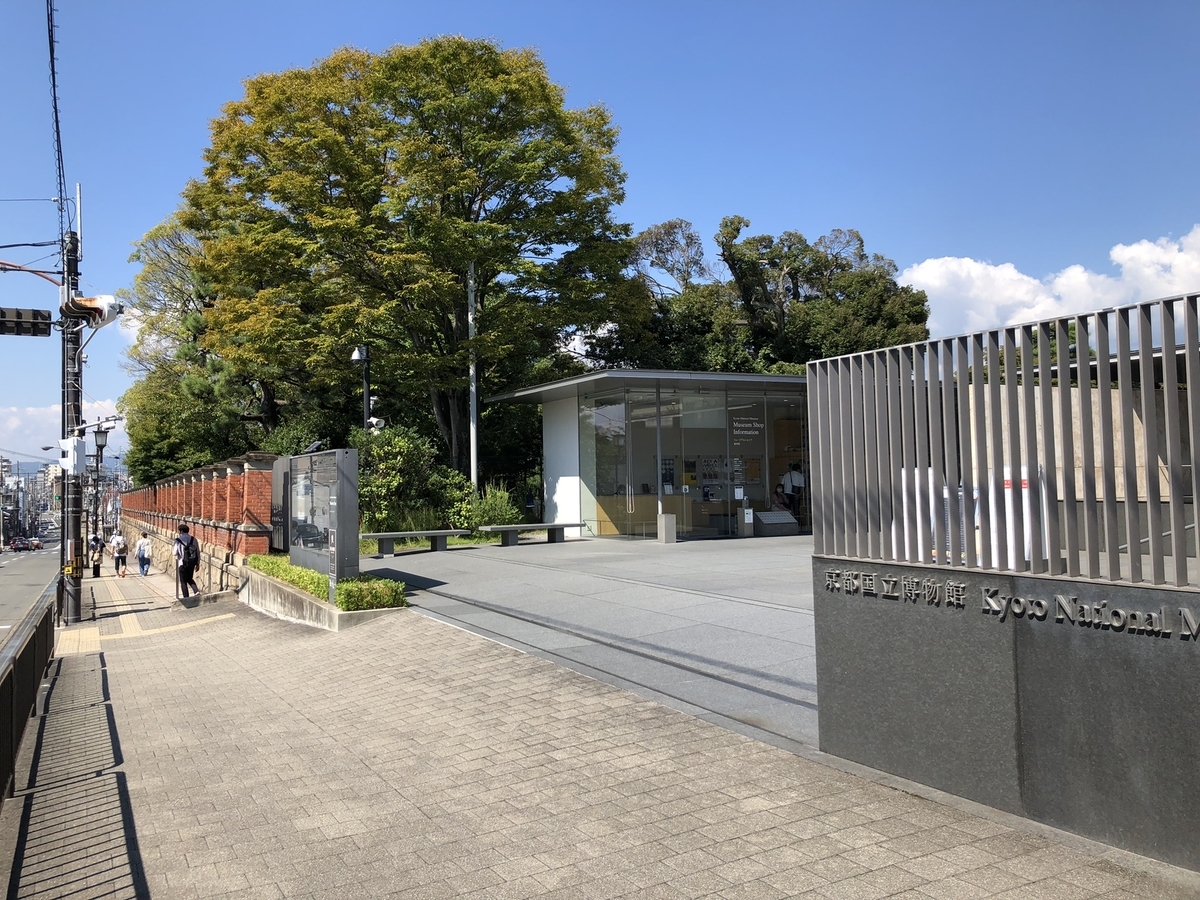
Get off at Higashiyama Nanajo Bus Stop, then walk approx. 5 min.
This museum exhibits, preserves, and conducts research on cultural properties related to Kyoto.
The Main Hall of the Former Imperial Museum of Kyoto (Meiji Kotokan Hall), designed by architect Tokuma Katayama, is an important cultural property from the Meiji Era (1868-1912). Visitors can now also view exhibits in the museum’s Heisei Chishinkan Wing, which opened in 2014.
You can also find sculptor Auguste Rodin’s iconic statue “The Thinker” in the West Garden.
Further Information on Transportation and This Area
Related Articles

